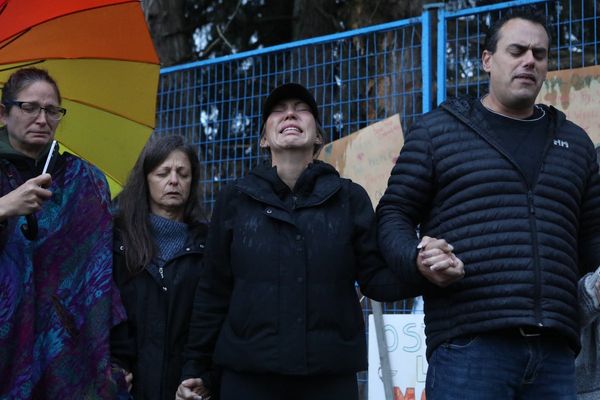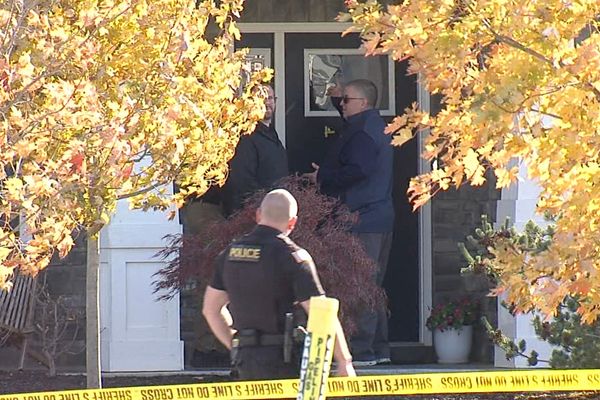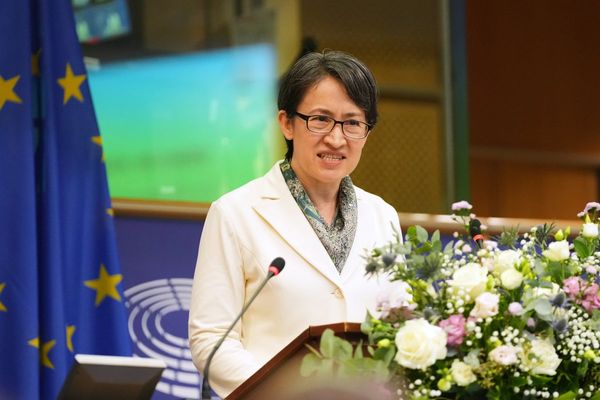
More than 1,000 Iranian girls in schools across the country appear to have suffered “mild poison” attacks since November, when the first cases emerged in the city of Qom, according to state media and officials.
The suspected attacks have been described by some observers as part of an extremist response – perhaps with tacit state endorsement – to the protests led by women and girls that have convulsed Iran since the death of Mahsa Amini in September.
But there are also suggestions that some of the cases may be evidence of mass sociogenic illness – symptoms without a biomedical cause – stemming from the repression of schoolgirls who have played a leading role in that movement.
One of the reasons why the suspected attacks have been so shocking is that girls’ education has been an accepted and fairly ordinary part of life in Iran. Since 2011, women have outnumbered men on university campuses; the World Bank says female literacy rose from 26% in 1976, before the Islamic Revolution, to 85% in 2021. While a 2012 policy restricted places for women at some public universities, the principle that girls are entitled to go to school is not a controversial one.
Here is a summary of what we know, and what the consequences may be.
What is causing the incidents?
Because of severe limits on press freedom on Iran, reporters face challenges to their ability to investigate the circumstances of the incidents – and there is no direct evidence of responsibility. But it is possible to put some details together.
“The attacks aren’t sophisticated at all,” said Deepa Parent, a human rights journalist who has been covering the story for the Guardian. “One doctor told me that based on the symptoms they’re seeing, it’s likely to be a weak organophosphate agent [widely used in agriculture as pesticide].” The doctor told Parent that the only people he had treated in the past with similar symptoms worked in agricultural or military settings.

In seeking to narrow possible responsibility, some have looked to the fact that the first incidents were in Qom, a highly religious city about 80 miles from Tehran. “While girls’ education is widely accepted, there are radical Islamists there who are against it,” Parent said.
Some have asked if the incidents may be sanctioned or enabled by the government as part of efforts to intimidate the protest movement that has gripped the country since September, when Amini, a young Kurdish woman, died in the custody of Iran’s “morality police”. Given the simplicity of the suspected raw materials, it is also possible the attacks were copycat incidents.
There have also been claims that at least some of the cases may be the product of “mass sociogenic illness”, where symptoms spread without a clear biomedical cause. Proponents of that argument note the harsh repression of protesters in Iran as a possible trigger.
A review of blood tests from some Iranian schoolgirls found no evidence of toxins, this BBC explainer notes – although it also says that the results are not sufficient evidence to rule out poisoning even in the cases under review. The Wall Street Journal reported that in one video posted on social media last week, a class appeared to fall ill after a girl with asthma suffered breathing difficulties, which prompted a teacher to ask if students had smelled anything.
While it is plausible that some cases could be explained this way, in some instances witnesses have reported seeing suspicious objects thrown into schoolyards. Dan Kaszeta, a chemical weapons expert at the Royal United Services Institute thinktank, told the BBC that poisonous substances can quickly degrade, making it very hard to draw firm conclusions. Some have also asked if similar incidents involving men or boys would have been subjected to the same scrutiny over the possibility of an “anxious” response.
Why might girls be targeted?
“After Mahsa’s death, it was mostly university students who took to the streets first,” said Parent. “But soon after, there were reports of three teenage girls who died from blows to the head: Setareh Tajik, Sarina Esmailzadeh and Nika Shahkarami.
“These deaths completely changed the situation. I started to see pictures of teenage girls showing their middle fingers on a private protest group, burning Ayatollah Khamenei’s picture – they started this in the classrooms. And then these girls started to bunk class and join the protests in the streets.”
While it is possible that extremists are taking advantage of the febrile political situation to act on their longstanding misogynistic view of women’s education, the incidents are widely viewed as a consequence of recent events.
“Nobody believes that it is coincidence that it has followed the protests,” said Parent. “What you hear from activists and on protest networks is that this is revenge on these girls, and on their families.”
How has the Iranian government responded?
After months of ignoring the incidents, a sharp recent upsurge in the number of cases appears to have forced the authorities’ hand. On Monday the country’s supreme leader, Ali Khamenei, spoke publicly on the subject for the first time, saying that if the incidents were deliberate then the culprits should be sentenced to death for committing an “unforgivable crime”.
Parent said international attention may have prompted authorities to acknowledge the phenomenon.
“The foreign minister was at the UN human rights council, and he was scheduled to give an interview to Christiane Amanpour at CNN. That may have forced their hand,” she said. At the UNHRC, an Iranian diplomat said his country had “achieved greatly in empowering women and girls”.
Few observers will have confidence in any investigation. Besides questions over whether the authorities sanctioned any attacks, “Iranian authorities have a terrible record of investigating violence against women and girls”, Human Rights Watch said last week, pointing to the 2014 example of acid attacks on women in the city of Isfahan, which resulted in no arrests or prosecutions.
What does all this mean for the future of the protest movement?
Whatever the complexity of assessing the causes, the spate of incidents comes at a febrile moment. While there has been a period of relative quiet in protest recently – perhaps because of a sharp rise in executions – the incidents in girls’ schools have prompted a new sense of outrage, Parent said. “Protesters are telling me that they cannot allow this to happen to young girls.” On Wednesday – International Women’s Day – new protests are planned.
“These schoolgirls are seen as babies, there is a protectiveness,” Parent said. “It was the death of those 16-year-old girls that charged the movement early on, and the anger over the situation for young girls now may do the same thing again.”







